Did You Know You Can Harvest Your Beetroot At Different Stages? These Gardeners Show How
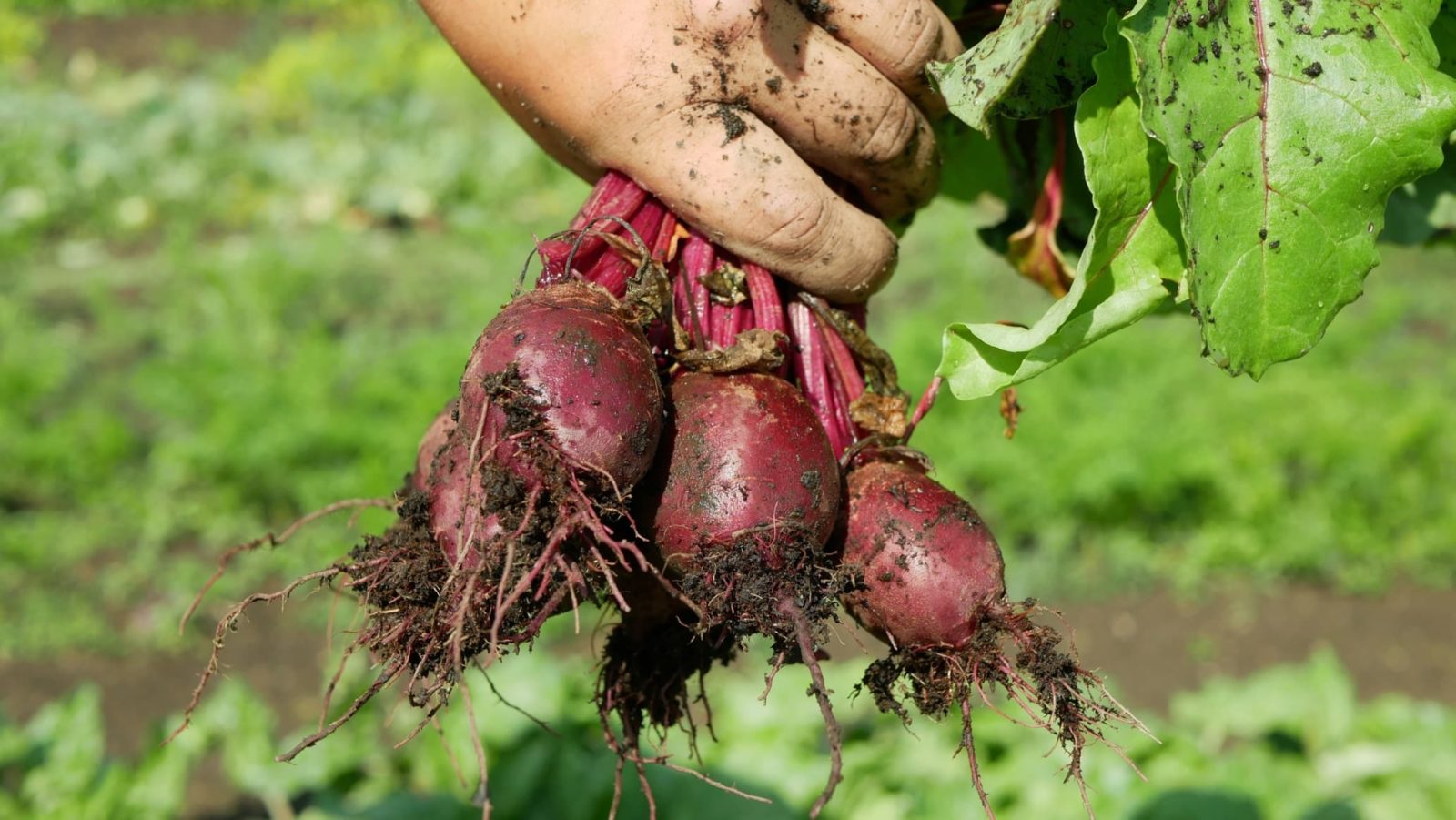
VEGETABLES > BEETROOT > HARVESTING

Elizabeth is a Permaculture Garden Designer, Sustainability Consultant and Professional Writer, working as an advocate for positive change. She graduated from the University of St. Andrews with an MA in English and Philosophy and obtained a Diploma in Applied Permaculture Design from the Permaculture Association.
Reviewed By PETER LICKORISH

Peter is a Horticulture Lecturer and self-employed Horticulturist, with a passion for diverse areas of the industry - from garden design to the science behind plant growth and propagation. He has completed the Royal Horticultural Society’s Master of Horticulture (MHort) Award and lectures on RHS courses at Bedford College.
Contributions From EMILY CUPIT

Emily is a Gardening Writer, Photographer and Videographer from Derbyshire, UK. She is the Founder of Emily's Green Diary - a community of more than 75,000 people who share in her gardening journey.

Sara Venn is the founder and leader of Edible Bristol, an organisation set up to create edible gardens across the city of Bristol. With 60 gardens and counting, the project is still growing. Sara also has previous experience as a Horticulturist at various plant nurseries.
IN THIS GUIDE
BEETROOT GUIDES
Container Growing
Harvesting
Sowing
Beetroot is a wonderful crop for home growing and a beetroot harvest can be very rewarding.
But how and when is it harvested?
Beetroot is a crop which can offer a lot – if you know what yields are offered by these plants, when to obtain those yields and how they can be used.
Below is some information to help you understand how to harvest your beetroot and the various stages at which you can do so.
How To Harvest Beetroot
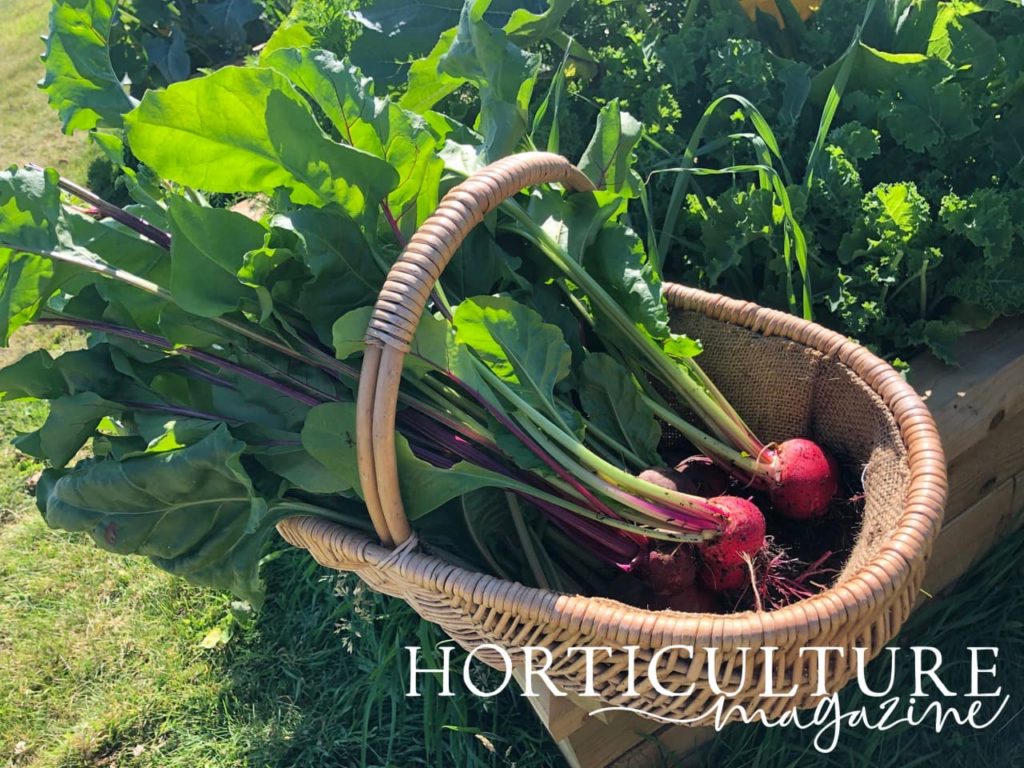
Many beetroots can simply be harvested by grasping the plants where the leaves meet the top of the root, and lifting them from the soil.
| Difficulty | Easy |
| Equipment Required | None |
| When To Harvest | Late Spring, Summer, Mid-Autumn |
While carrots or parsnips, their longer roots can often break off below the soil if you try to tug them up by hand, but with round beetroots, this is not usually a problem unless the soil is heavy or rather compacted.
If you are having trouble lifting the beetroots by hand, watering a day or so before you harvest may help.
You can also simply ease them out of the soil as you would carrots or other root crops with a garden fork.
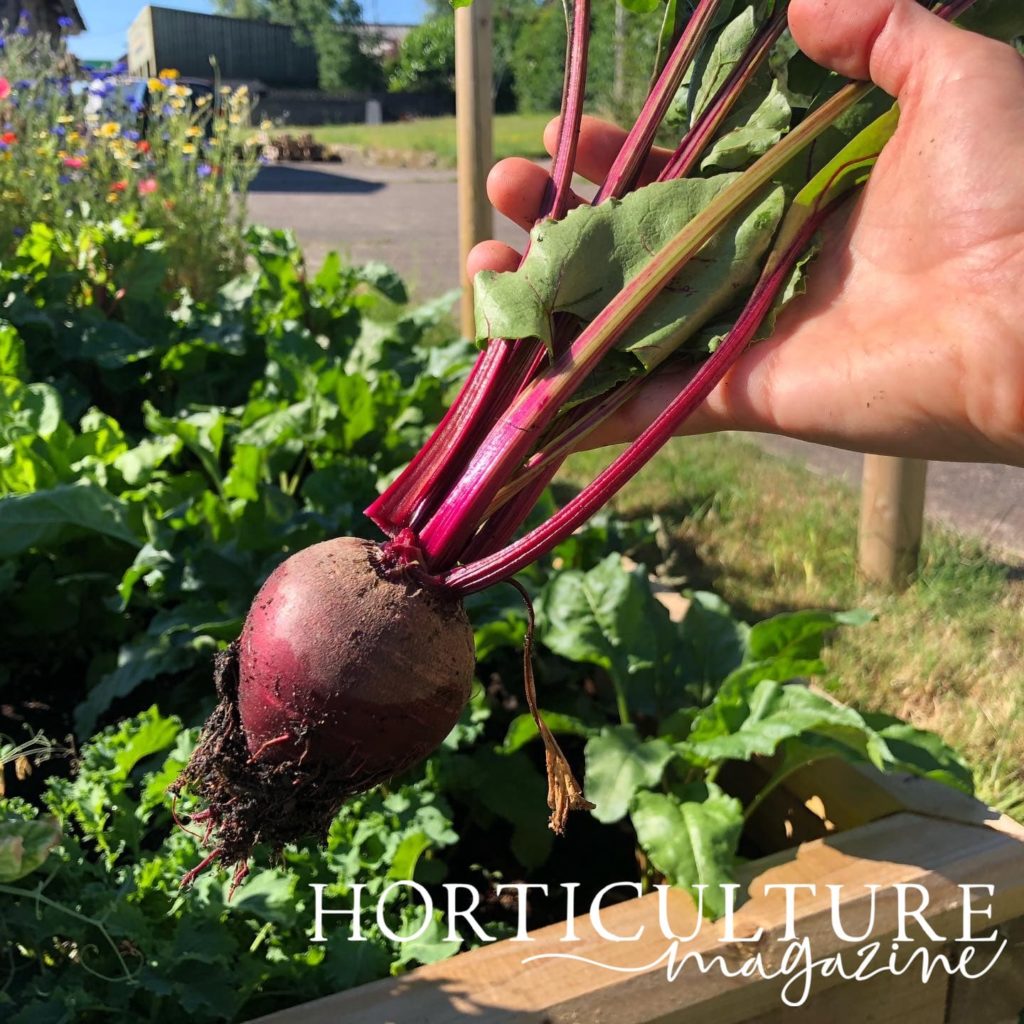
Insert the fork into the soil close to (but not too close to) the beetroots and lever the soil and beetroots upwards.
The fork will loosen the soil and you can then simply lift the beetroots from the ground.
If you plan to use the beetroots right away, you can shake or knock off excess soil, then give them a wash.
If you plan on storing your beetroots for later use, then it is best not to wash them.
Simply knock off loose dirt and place them in sand or sawdust in a root cellar or other suitable storage space, washing them only when you are about to use them.
When To Harvest Beetroot
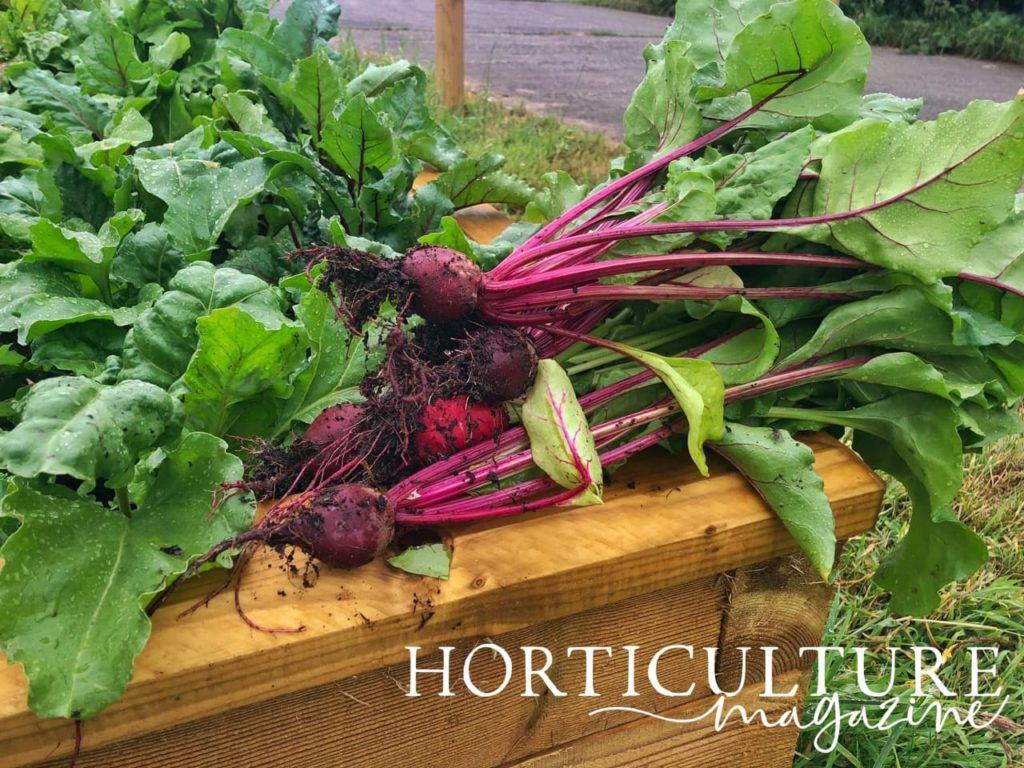
Understanding what you can harvest and when is important in making the most of your garden.
Beetroots are interesting because they can provide harvests of both leaves and roots, and can be harvested at a series of stages and over a fairly long period.
Harvesting Beetroot Leaves
Before the roots of your beetroots are ready to harvest, you can snip off the occasional leaf to use.
Just make sure that you take only individual leaves, and take these sparingly, so that you do not overly compromise the growth of the root, which is the main harvest of these plants.
Harvesting Baby Beetroot
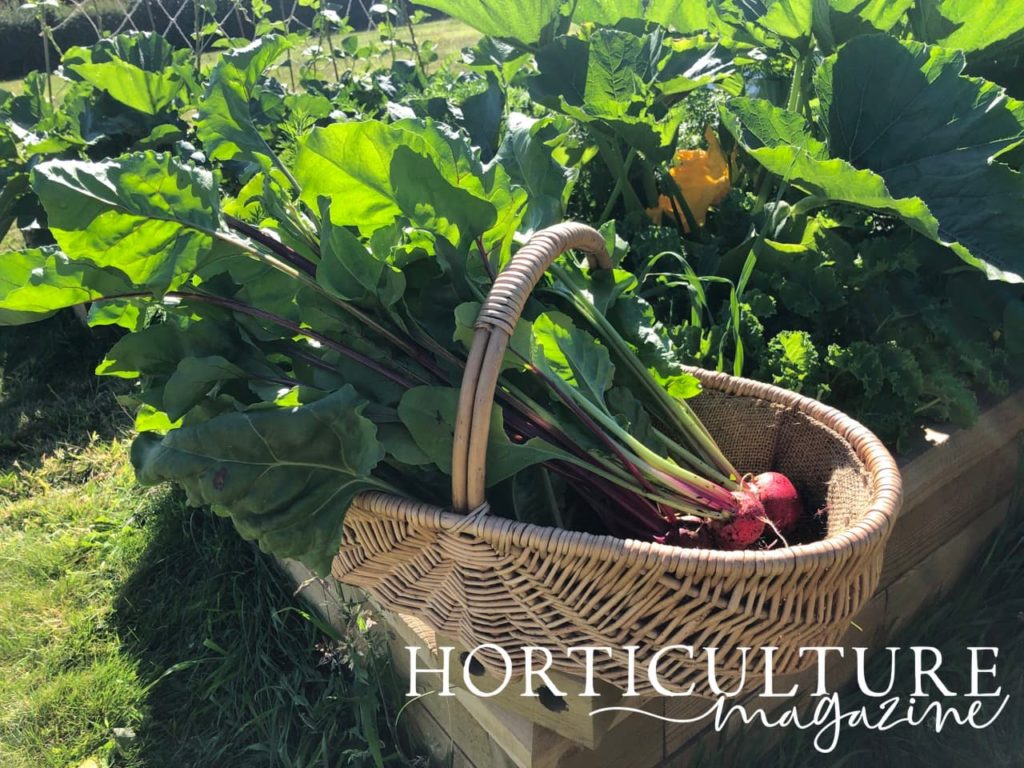
Beetroot is a crop that can be harvested over a relatively long period.
When exactly you will harvest your beetroot will depend on where you live, and when your crop was planted.
The important thing to understand is that beetroot do not need to be fully mature to be harvested.
In fact, they can often taste much better when harvested while they are still rather small.
Thinning Rows
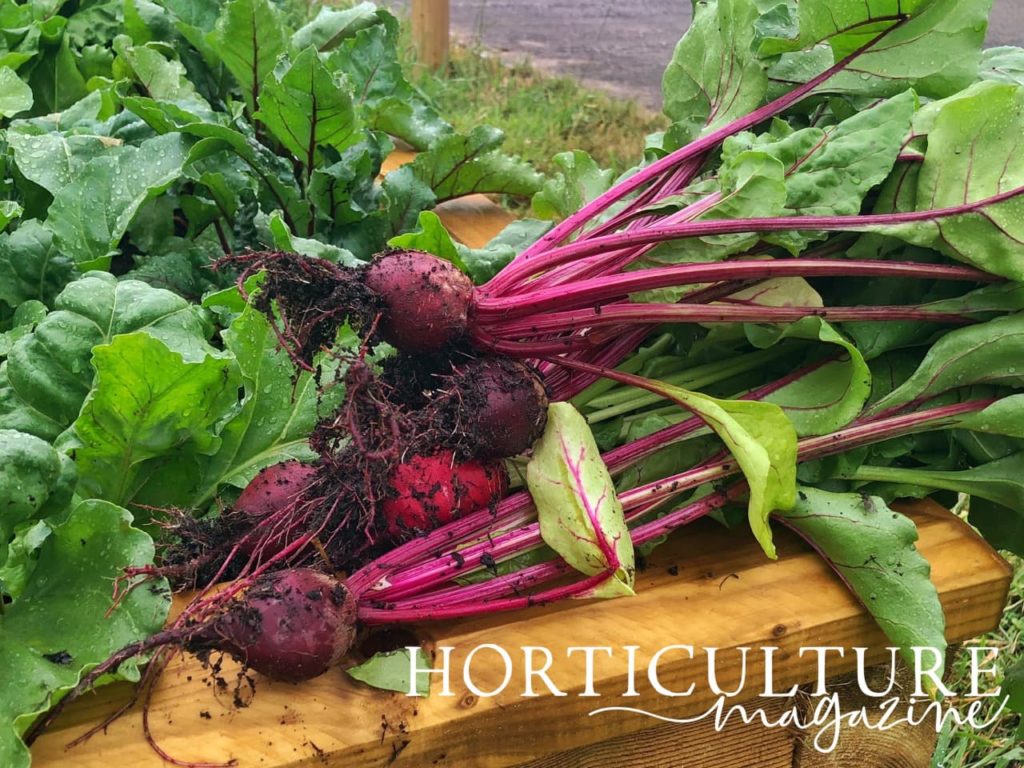
The first time that you might harvest beetroots is while thinning rows.
You might remove some smaller beetroots to allow the remaining plants to continue growing to produce larger roots.
“There is a tradition for harvesting every other root at golf ball size, and the rest at cricket ball size, assuming this is the shape of your variety,” shares Master Horticulturist Peter Lickorish.
These small baby beetroot might not have reached their full potential in terms of size, but for me, these little beetroots are the tastiest beetroots of all.
They are great grated into coleslaws or salads, but can be used in a range of different ways.
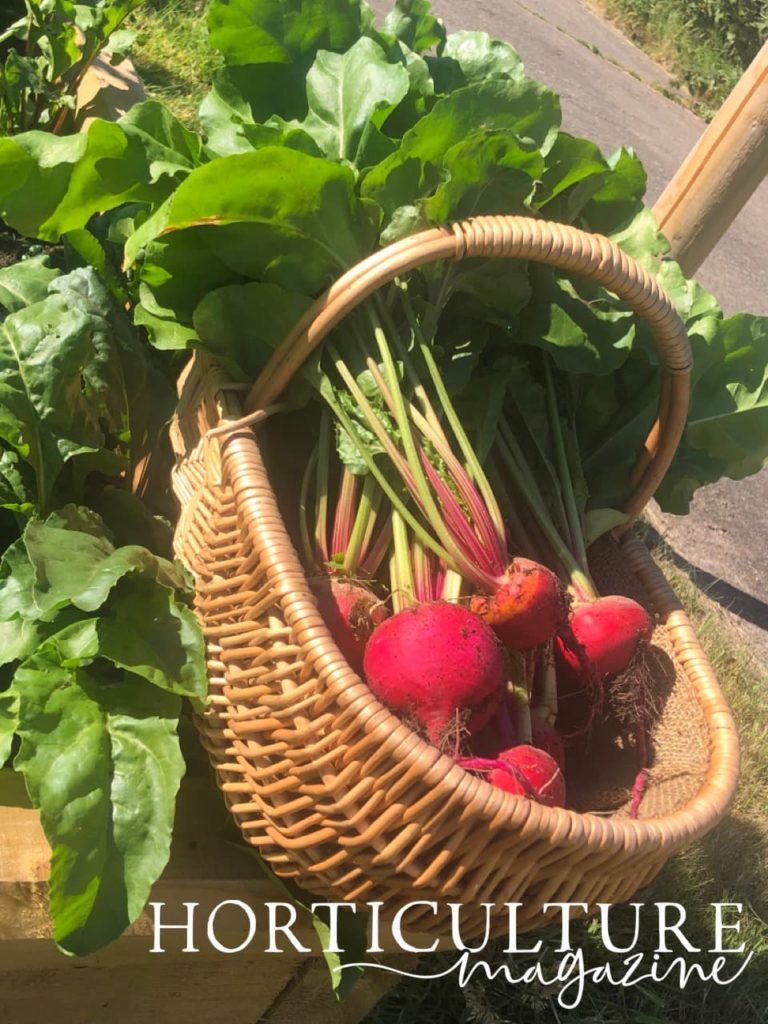
These baby beetroot will be around the size of a golf ball, or perhaps a little smaller.
Harvesting Mature Beetroot
Most beetroots however, are harvested when the roots are between golf ball and cricket ball size.
If you leave them to grow much larger than that, they tend to become woodier and will not usually taste as good.
Globe beetroot types will typically be ready to harvest around 8-10 weeks after planting, while longer cylindrical beetroots can take nearly double the length of time.
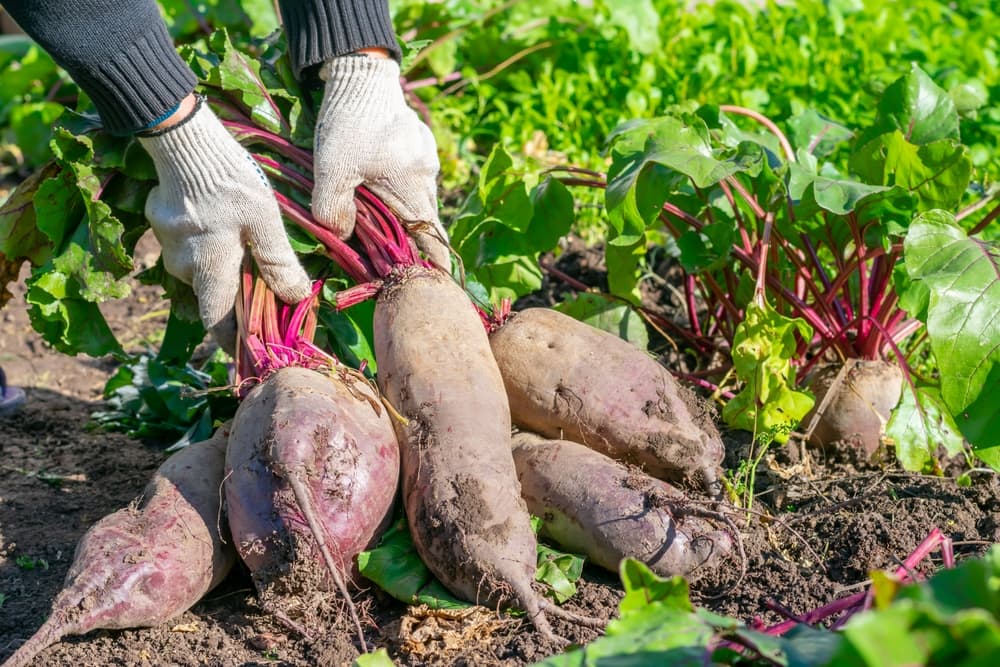
You should be able to see quite easily how large your beetroot has grown, since by the time they are mature, quite a lot of the root is visible above the soil surface.
Just remember, especially when beetroot are reaching maturity in the summer, that bigger is not always better – do not leave it too long before you harvest your mature beetroot.
Successional Sowing
Successional sowing earlier in the year would mean that you are able to harvest beetroots over quite a long period, rather than having a glut that must be preserved or used up all at once.
If you did sow successionally, you may have some later sown beetroots still in the ground as winter approaches.
Winter Harvesting
One other interesting thing to note is that you do not necessarily have to harvest your beetroot crop before winter arrives.
With a little protection from cloches, straw or a row cover, later sown beetroot can be left in the ground and harvested as and when you need them, through to the following March.
Beetroots can even taste slightly sweeter after they have been exposed to a few frosts.
Peels
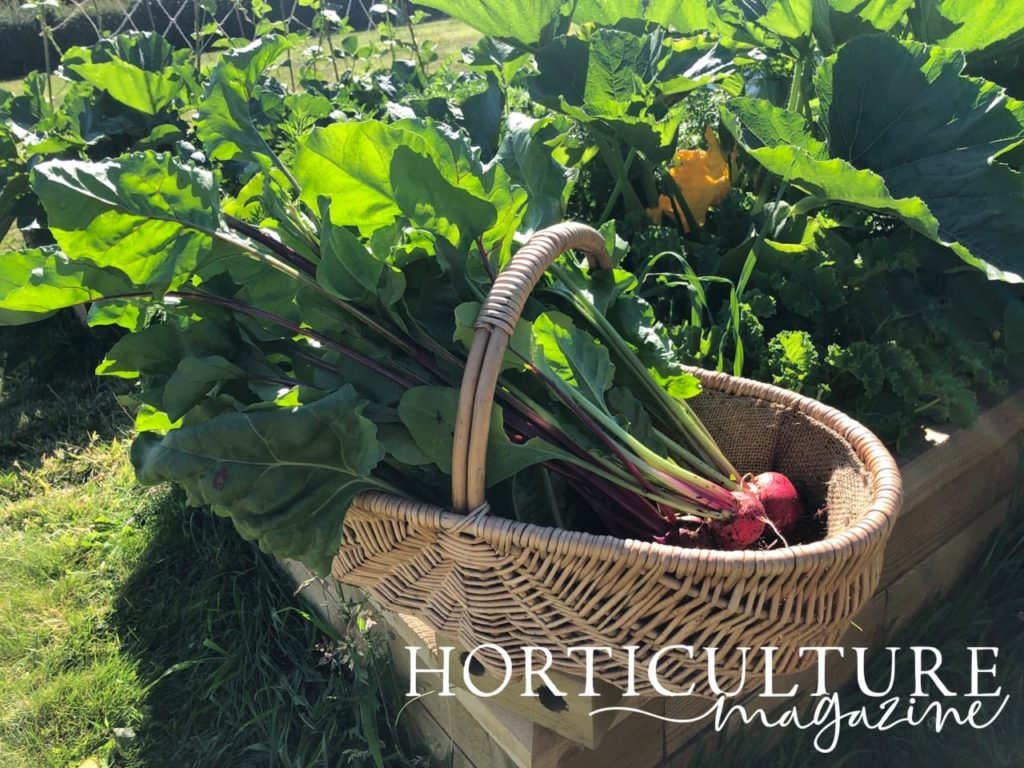
When harvesting beetroots, there is one final yield to consider.
Once the roots have been harvested, if the peels are not being used in a recipe, these can be put to one side.
These peelings can be used in a vegetable stock with other scraps and peelings.
But they can also, interestingly, be used to make a vibrant plant-based, natural and edible dye or food colouring.
Storing Beetroot
“Don’t feel like you have to pull up all your crops at once,” explains Sara Venn from Edible Bristol.
“If you have plants like beetroots, leave them in the soil or find a pickling recipe. You can leave root crops until the end of the season in the ground.”
Remember, for storage you will cut off the foliage of the plants.
But fresh beetroot leaves should not be relegated to the compost heap, since these are also a useful yield.
Beetroot leaves are also an edible part of the plant – similar to chard.
They can be used as you would use chard or other cooked greens and are another addition to your home-grown diet.
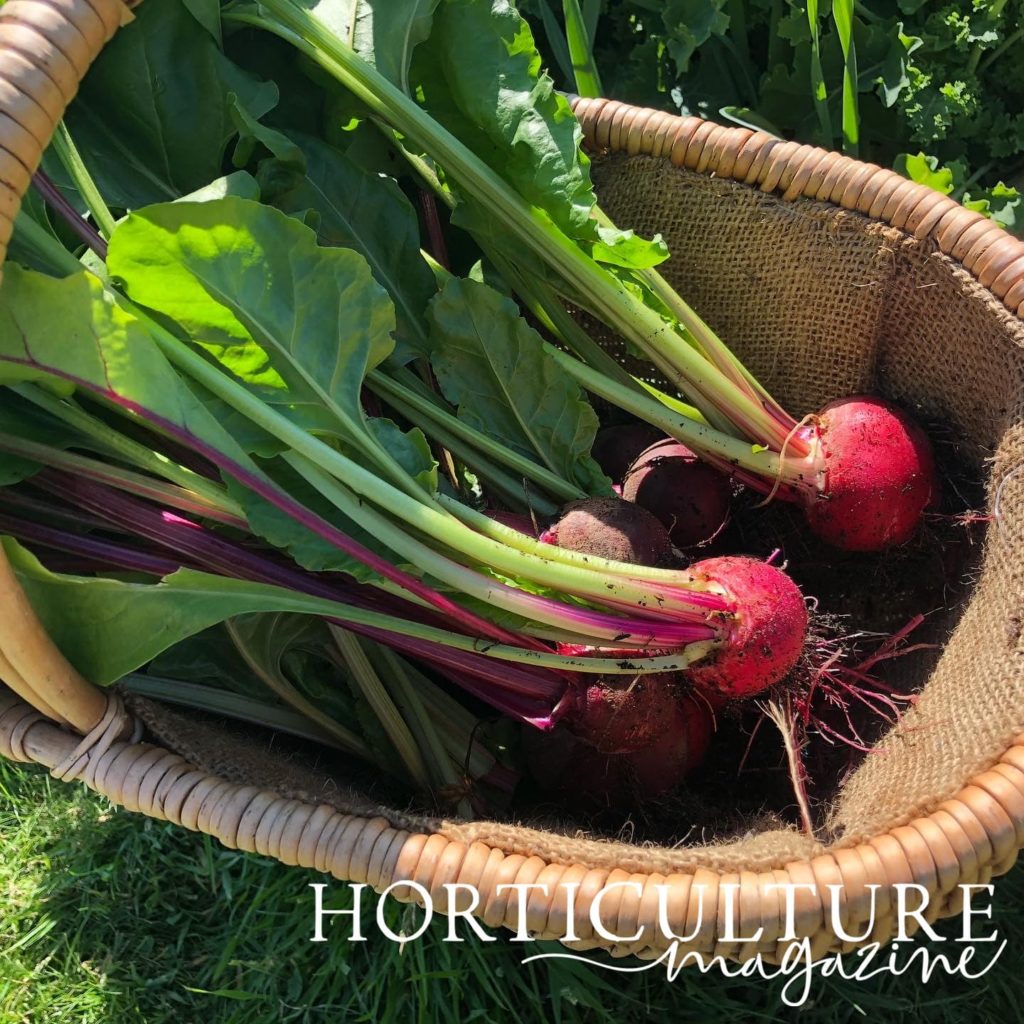
So take off good leaves and use them right away, or freeze them or preserve them in some other way for later use.
“The roots themselves must not be allowed to shrivel, so place them in slightly moist sand in the dark and ideally keep them frost-free,” shares Peter.
“Alternatively, pickle them or peel off the skin, cut them up and freeze them for up to a year.
“If you want winter harvests, but need your beds back, there’s another way of storing beetroots outdoors, called a clamp.
“This involves storing a pyramid shaped pile of beetroots, with the top growth trimmed off, on a bed of a loose material like straw.
“The height of the pile can be up to 1m, is covered with straw and then smoothed soil to protect from frost damage and allow water run-off.
“A drainage trench should be dug around the clamp, and excess water can also escape through the exposed straw.”
Beetroot is a plant that offers a lot – by understanding secondary yields, harvesting correctly (and at the right times) you can really make the most of this crop.
